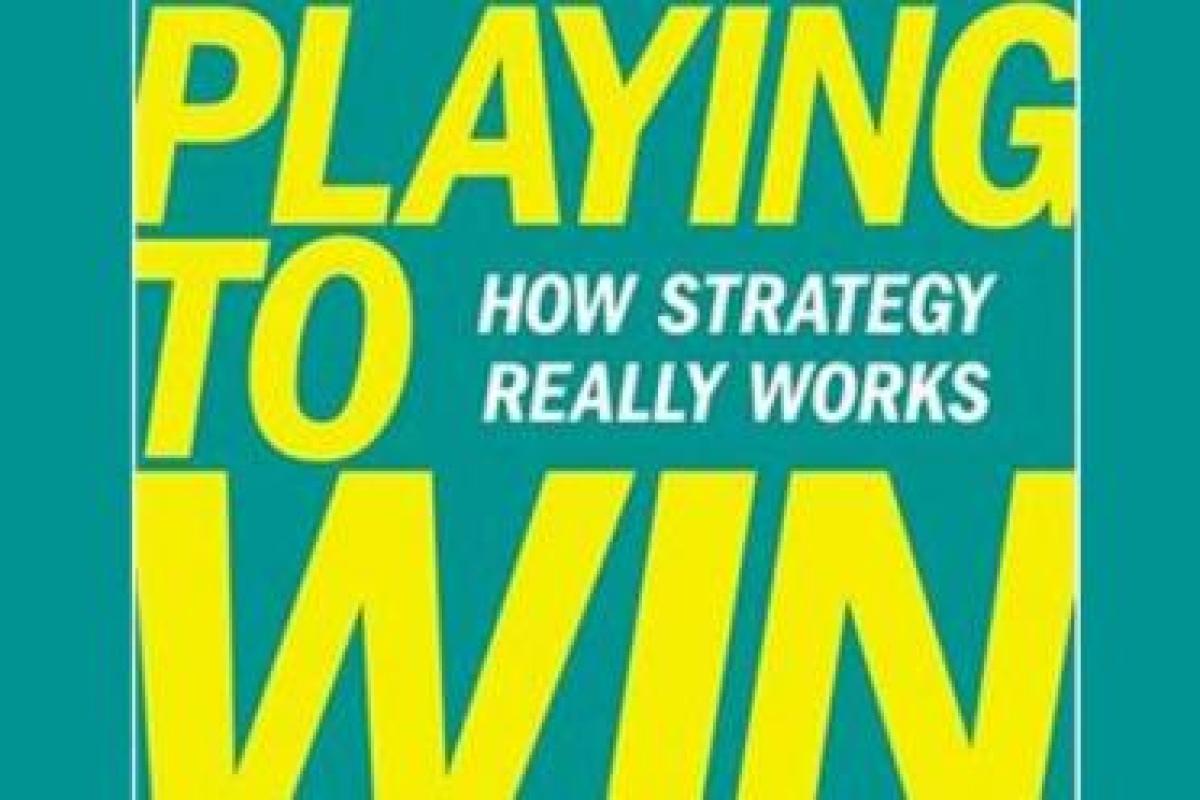Playing to Win is indispensable for marketers in large companies who are trying to generate growth from mature brands.
The title Playing to Win might sound like a mindless sporting platitude, and lips may curl at ‘masstige’, the name Procter & Gamble gave to a new segment in the first case described in this book. But this is a very thoughtful discussion of what strategy means for large companies and how to approach it. Given that it is co-written by one of the most successful CEOs of the biggest brand machine of all time, it deserves to be taken seriously.
P&G’s idea of winning is subtle and not at all macho. Drawing on its Pampers experience with film, P&G had developed some outstanding plastic technologies. Consumers loved the new products in tests, but it became clear that challenging the incumbents in cling film and trash bags directly would be immensely expensive and potentially disastrous. P&G decided a better way of ‘winning’ with these technologies would be to license them to Clorox, so it took a 20% share in a joint venture that by 2008 was worth more than a billion dollars.
‘Masstige’ turned out to be key to defining a large new segment for the Olay brand – women in their 30s and 40s prepared to pay more for really effective skin products. The relaunched range, with new technology, value proposition and business model, was clearly differentiated from most supermarket products, while only competing at the margin with prestige brands in department stores. Olay became a $2.5 billion brand.
This is not a sparkling page-turner, like Richard Rumelt’s critique of the wish-lists that call themselves strategies in Good Strategy/Bad Strategy. But Lafley and Martin don’t need to be told that if it doesn’t spell out exactly how obstacles will be overcome then it isn’t a strategy. They show how they did it at P&G and are not afraid to discuss failures.
Nor is it much of a guide to entirely new markets or to dealing with massive disruption. But the biggest challenge facing most large companies is how to generate growth from mature brands and avoid slow decline. Lafley and his colleagues rose to that challenge spectacularly. In 2000, when he became CEO, P&G had 10 brands that were achieving sales of more than a billion dollars. When he stepped down in 2009, it had 25 and overall sales had doubled.
Lafley revitalised a vast bureaucracy with a fresh but rigorous approach to strategy, making tough choices encapsulated in five questions: What is our winning aspiration? Where will we play? How will we win? What capabilities must be in place? What management systems are required?
Many companies don’t even ask themselves these questions, let alone make the choices, which in the long run almost guarantees failure.
According to Lafley and Martin, the answers can become a ‘reinforcing cascade’, which works both for individual brands and at company level. The crucial question for large companies is where to play – and where not to. This is about much more than geography – at P&G, decisions are made after exhaustive research, careful segmentation and analysis of distribution options. Some segments don’t allow brands to command a premium, while others offer opportunities for major extensions.
In new markets the crucial question is whether the business has the capabilities necessary to succeed – one most new entrants duck. P&G will only enter – or remain in – markets where there is an excellent fit with its core capabilities. The organisation subscribes to Michael Porter’s idea that powerful competitive advantage comes from a set of capabilities that reinforce each other, making each one stronger. It expects each business unit, as well as the company as a whole, to have its own activity system.
P&G decided its core capabilities are understanding customers, creating and building brands, innovating in the broadest sense, partnering with customers and suppliers, and leveraging global scale. Each reinforces the others and the system as a whole is highly distinctive: no competitor could replicate it. P&G disposed of profitable brands such as Folgers and Pringles because they couldn’t benefit sufficiently from company reinforcement and therefore wouldn’t help to sustain long-term competitive advantage. Very few companies would be that ruthless.
But its approach to strategy formulation is anything but ruthless. Lafley took P&G away from the adversarial way strategies used to be reviewed and challenged, with ‘bullet-proof’ presentations and defensive debates. Borrowing ideas from Chris Argyris, it tried to foster dialogue. The idea was not to judge strategies but to improve them, asking the subtle question: ‘What would have to be true for this to be a great choice?’ The whole team then tries to establish which of the conditions are most likely to hold and gradually the most robust choice emerges. Rather than a debate with winners and losers, the process is an enquiry in which everyone participates.
For any strategist in a mature company, this book really is essential reading.
Kieran Levis is founder of Cortona Consulting and author of Winners and Losers: Creators and casualties of the age of the internet [email protected]. Playing to Win: How strategy really works, by AG Lafley and Roger L Martin, is published by Harvard Business Review Press, 2013.
This review was taken from the June issue of Market Leader. Browse the archive here.
